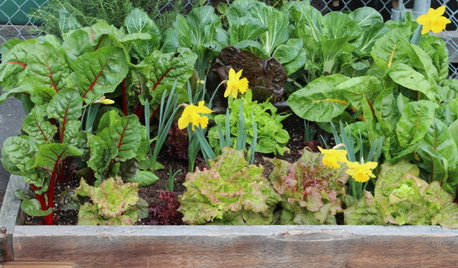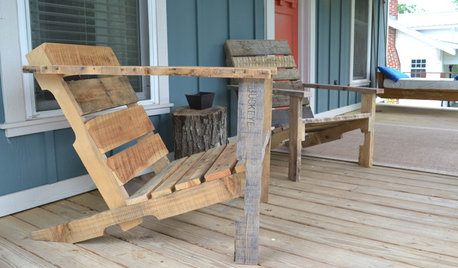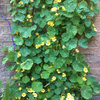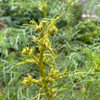It can be fun to breed your own zinnias - Part 16
zen_man
12 years ago
Related Stories

PETSWhat Chihuahuas Can Teach Us About Interior Design
Who knew these tiny dogs could be such a huge fount of design tips? Houzzers did
Full Story
FUN HOUZZWorld of Design: 16 Fun Homes That Encourage Play
What does a fun home look like? These 16 very different properties around the world are designed with enjoyment in mind
Full Story
FARM YOUR YARDGrow a Kitchen Garden in 16 Square Feet
Got a sunny 4-by-4 space? You can make meals more interesting with your own vegetables and herbs
Full Story
HOUZZ TVHouzz TV: This Dream Midcentury Home in a Forest Even Has Its Own Train
Original wood ceilings, a cool layout and, yes, a quarter-scale train persuaded these homeowners to take a chance on a run-down property
Full Story
KIDS’ SPACESA Place of His Own: Boy's First Bedroom
Colorful, creative, themed or not, boys' bedrooms like these encourage happy times
Full Story
WOODWORKINGBuild Your Own Wooden Deck Chair From a Pallet — for $10!
Take the ecofriendly high road with a low-cost outdoor chair you make yourself
Full Story
HOUSEKEEPINGBaking Soda: The Amazing All-Natural Cleanser You Already Own
Battle grime, banish odors and freshen clothes with this common nontoxic cupboard staple
Full Story
INSPIRING GARDENSWhat We Can Learn From Longwood Gardens’ New Meadow
Sustainability, ecology, native plant communities ... this public garden is brimming with lessons on horticulture for home gardeners
Full Story
LAUNDRY ROOMSThe Cure for Houzz Envy: Laundry Room Touches Anyone Can Do
Make fluffing and folding more enjoyable by borrowing these ideas from beautifully designed laundry rooms
Full Story
HOUSEKEEPINGAnother Independence Day: When Kids Can Do Their Laundry
Set yourself free and give your child a valuable life skill at the same time
Full StoryMore Discussions









jackier_gardener
zen_manOriginal Author
Related Professionals
Derry Landscape Architects & Landscape Designers · La Marque Landscape Architects & Landscape Designers · Lowell Landscape Architects & Landscape Designers · Alpharetta Landscape Contractors · Galveston Landscape Contractors · Mission Landscape Contractors · River Ridge Landscape Contractors · Sammamish Landscape Contractors · Wells Landscape Contractors · Charlotte Driveway Installation & Maintenance · Fallbrook Driveway Installation & Maintenance · Solana Beach Decks, Patios & Outdoor Enclosures · Brooklyn Park Decks, Patios & Outdoor Enclosures · Somerville Decks, Patios & Outdoor Enclosures · Statesville Decks, Patios & Outdoor Enclosuresjackier_gardener
zen_manOriginal Author
jackier_gardener
zen_manOriginal Author
jackier_gardener
zen_manOriginal Author
jackier_gardener
zen_manOriginal Author
jackier_gardener
jackier_gardener
jackier_gardener
zen_manOriginal Author
zen_manOriginal Author
zen_manOriginal Author
zen_manOriginal Author
zen_manOriginal Author
jackier_gardener
eicher
zen_manOriginal Author
zen_manOriginal Author
eicher
zen_manOriginal Author
jackier_gardener
zen_manOriginal Author
jackier_gardener
zen_manOriginal Author
jackier_gardener
zen_manOriginal Author
jackier_gardener
zen_manOriginal Author
jackier_gardener
zen_manOriginal Author
jackier_gardener
zen_manOriginal Author
caricapapaya
jackier_gardener
zen_manOriginal Author
zen_manOriginal Author
zen_manOriginal Author
jackier_gardener
zen_manOriginal Author
jackier_gardener
engeizuki
zen_manOriginal Author
caricapapaya
zen_manOriginal Author
zen_manOriginal Author
zen_manOriginal Author